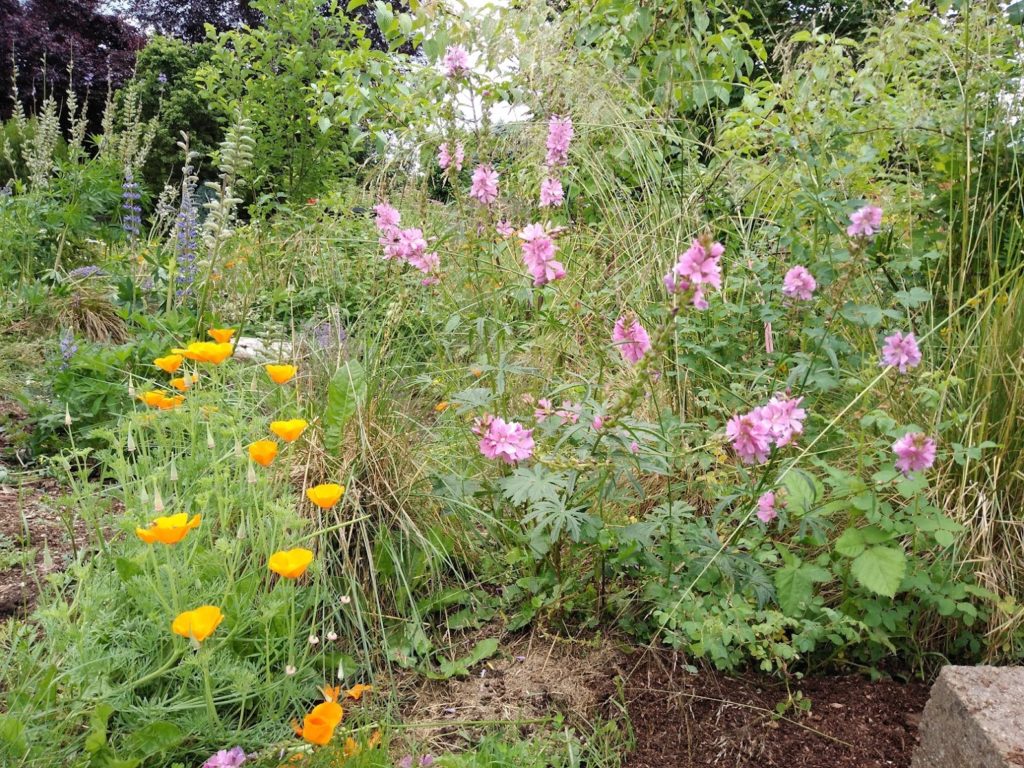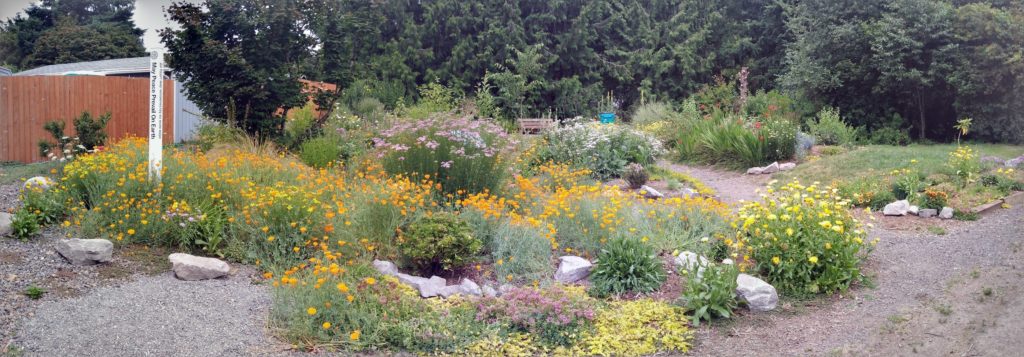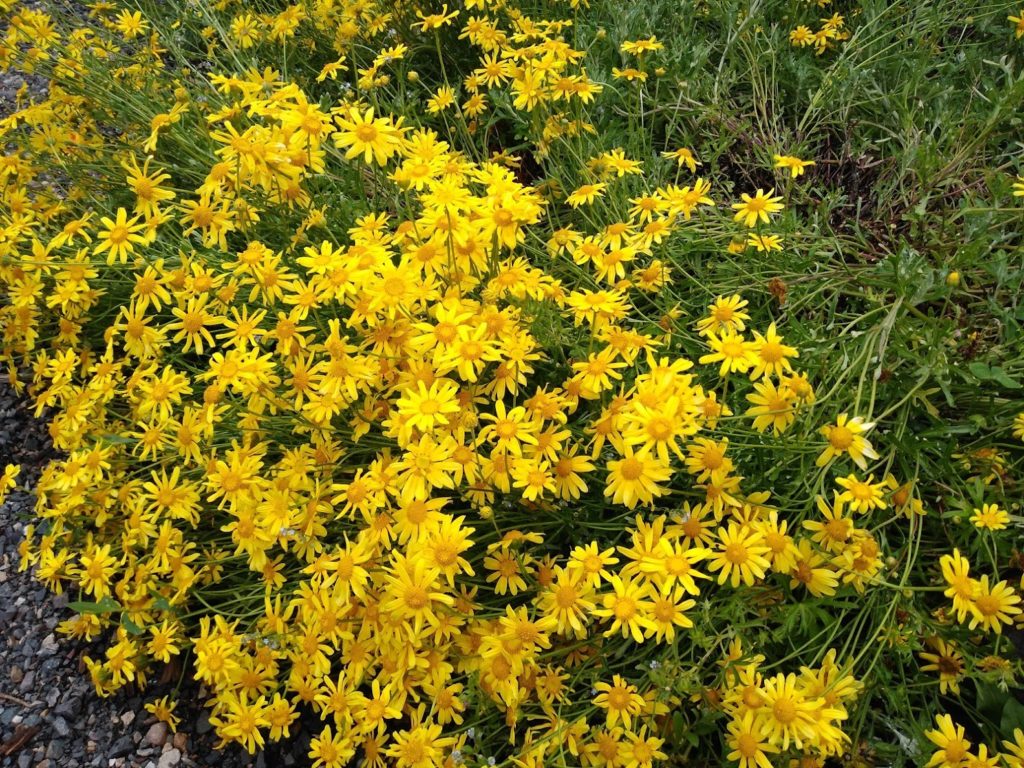Open Gardens Project – Featuring the “Water Wise Garden at the Wildlife Botanical Gardens” Habitat
Site Information: The Water Wise Garden habitat is located in Brush Prairie, Washington. It has part to full shade, with moist soil conditions.

What inspired you to enroll in the Backyard Habitat Certification Program?
I’m currently President of NatureScaping of SW WA, a non-profit organization of volunteers who manage the Wildlife Botanical Gardens in Brush Prairie, WA. Gardening with native plants to restore lost habitat for our native wildlife and educating people on the importance of maintaining native plants in their yards is a core value of mine. The dedicated individuals who run the Backyard Habitat Certification Program were open to my idea to certify the first community garden in Clark County. The Water Wise Garden was certified platinum in June 2021!
How would you describe your habitat?
The Water Wise Garden includes a rain garden, hedgerows, small meadows and rock gardens of native small tree/shrubs and herbaceous plants, and non-native plants useful to pollinators and other wildlife. Natural gardening techniques include sheet mulching (lasagna technique) over grass; utilizing compost, gravel, river rock and bark chips to meet the needs of the plants and to conserve water. Detritus is left on the ground for winter habitat for wildlife, dried seed heads to feed birds over the winter.

What are your top three favorite native plants and why do you love them?
- Red-flowering currant (locally native) and golden currant (PNW native) for their early spring leafing out and then the flowers that provide nectar for native hummingbirds and bees (love the fragrance). These two plants bring benefit to our native wildlife all year including leaves and fruit eaten by mammals and birds through Fall. These are host plants for butterfly larvae, and other insects use these plants and are eaten by birds.
- The Mock orange is beautiful and fragrant in late Spring and provides forage for bees and butterflies, seeds for birds and leaves provide cover and are eaten by mammals.
What changes have you observed as a result of creating habitat?
The many visitors including photographers, homeschool and public school classes, and families who express appreciation and ask many questions. Many visitors read the rain garden interpretive sign and hopefully are inspired to incorporate a rain garden or other stormwater mitigation ideas into their yards. We see many species of birds, small mammals, and pollinators in the Garden.

What were the two most significant challenges you encountered while creating habitat, and how did you address them?
Noxious weeds and grass removal were the most significant challenges. Many volunteers helped with removal of blackberries, creeping jenny, Italian arum, and bindweed. Bindweed was an especially difficult invasive weed to eradicate. We did use Spectracide once in one back corner under dense shrubs that was overrun with bindweed. Every 3 to 4 weeks we pull up the emerging tendrils and hope this technique will eventually eradicate this weed or will keep it manageable.
What resources did you find especially helpful?
- Planting in a Post-Wild World by Thomas Rainer and Claudia West
- Bringing Nature Home by Douglas Tallamy
- Real Gardens Grow Natives by Eileen M. Stark
- WA Native Plant Society website
- Clark County Master Composter Recyclers classes on Lasagna Gardening techniques to cover grass.
- Student volunteers from local high school and colleges
- Clark County Master Gardener volunteers
How do you enjoy your Backyard Habitat throughout the different seasons? What are its highlights in each season?
I enjoy experiencing the structure of the garden during winter and dreaming of renovations; planning projects for the new year; in early Spring: the beauty of the early blooming shrubs and bulbs…love the beauty and fragrance of the native Western Azaleas and cinnamon fragrance of Golden Currant shrubs (PNW native); early summer – the native Penstemons bring me great delight when they bloom and bees swarm on them. Summer is yellow with Oregon Sunshine and dirty keeping up on all the growth. Fall is enjoying the cooler air, planting plants, watching the birds and mammals enjoy the fruits, reflecting on how the plans set in winter panned out or not. Love the colors of fall – Douglas asters, vine maple leaves, goldenrod.

What part of your backyard habitat are you most proud of?
Covering so much grass with native and wildlife-friendly non-native shrubs, small trees and herbaceous plants. After 5 years, the Garden is beginning to get overgrown and lots of wildlife are enjoying the fruits of all the volunteers’ labor.

Is there anything else you’d like to add about your journey?
The journey continues as the imagination and research leads to new garden ideas such as a rock garden near the Peace Pole, learning how/when to prune and propagate native shrubs. I’ve met many wonderful people who are engaged in the journey to plant more native plants and remove more lawn.